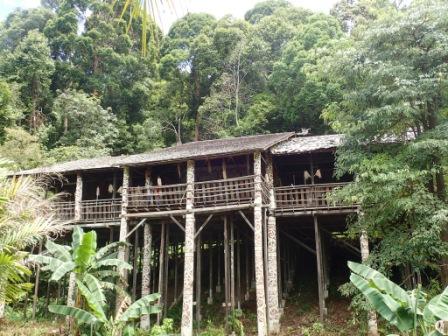It was good to be
back on Songster in Marmaris but
Mother Nature was not too welcoming. Our
first week back onboard, on the hard, it rained. Then both Bob and I came down with the flu
that just would not resolve for about 2 weeks.
So we sloshed through the puddles and mud, climbed the 4 metre ladder to
get onboard and generally huddled down unable to do much and feeling quite sorry
for ourselves.
 |
| Dreary view from the deck |
The sun finally came
out. We dragged ourselves out of our
sick beds still coughing and low energy to start the usual spring chores of
painting antifoul on the hull and giving Songster
a good wash and polish. We also got a
new propeller. Our old propeller was
getting very thin and was not quite the right size for the optimum running of
our new motor. Not a major issue but we
thought we would get it replaced while we were in Turkey and the Marvelous
Marlin Men in Red could do the job. Finally
it was launch day and Songster was
looking quite smart.
 |
| Shiny new propeller |
 |
| Getting ready for launching |
The next morning,
Bob's birthday, the Marlin engineers came to take the boat out into the bay to
test the new propeller. All went well
until they wanted to go astern (reverse to you Land Lubbers). The engineer
puts the engine hard astern before Bob had a chance to center the helm (wheel)
so the helm spins out of his hand and locks over hard. The boat was just going round in tight
circles. We fitted the emergency tiller,
a sort of long rod and bar that goes through a hole in the aft cabin deck and down
onto the rudder quadrant. This allows us to helm if the wheel falls off or
cables break . But this would not
give us steering. The engineer donned my
wet suit (he looked a lot better in it than I do!) and dove in to inspect the
problem. The water is still freezing and he came up quite blue. He confirmed the rudder was
jammed hard to starboard. Luckily we were away from the nearest
shore and drifting slowly back to the marina.
We were out in the
bay for a good three hours trying various ways of fixing the problem. A
small sail boat came by and tried to tow us but did not have the power against
our larger boat and a rudder hard to starboard. Then the engineer called up
the cavalry in the shape of a rubber ducky to help tow us back. So with
Bob in our dinghy pulling sideways and the other dinghy nudging the bow and the
engineer giving small bursts of the engine we managed to get back onto one of
the outer pontoons to await the diver who would don his frogman kit and take a
look. But as fate would have it up comes
the wind and no diver in his right mind will go under with the boat bouncing
around. Stuck on a bouncing pontoon, Bob,
being the hero, thinks that this situation calls for a mix of thinking and brute
strength. He reinstalled the emergency
tiller then put his back against the mizzen mast and feet on the tiller and
give a mighty heave ho and sure enough it swung free - All fixed. We
motored around to our usual spot on India pontoon (and on further inspection
found that the chain that limits the maximum swing of the rudder had broken.
This was easily fixed with a new bit of chain.
Bob was not a happy
chappy after all this. He kept thinking what might have happened in bad
conditions without the help of several good Samaritans and the engineers on
board. But then we went to his birthday dinner with a small group of
friends and it all became a good story over drinks and dinner. Everyone
had similar stories and Bob became much more sanguine about it all. The
birthday dinner was really lovely and a good time had by all. Our new
neighbours, a lovely American couple, had come to the rescue and got a
fantastic cake from town for the celebrations.
 |
| The Birthday Dinner |
 |
| Fantastic cake. Thank you Mary Beth and Karl |










































